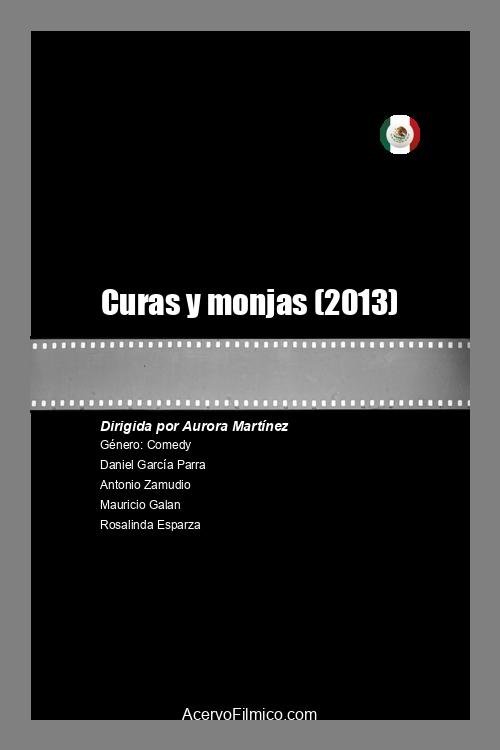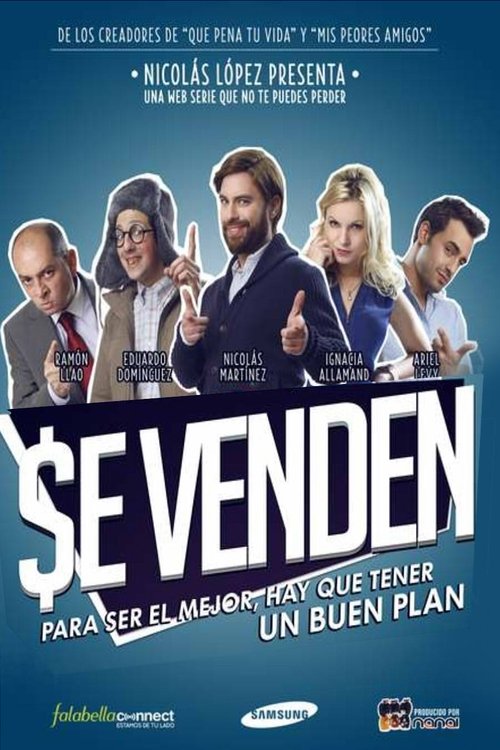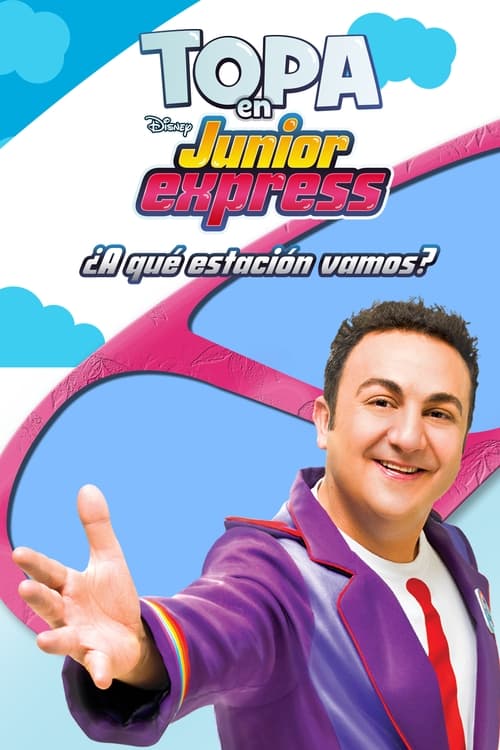
Ask Your Own Question
What is the plot?
What is the ending?
In the ending of "Curas y monjas," the story culminates in a series of confrontations and revelations among the main characters, leading to a resolution of their intertwined fates. The film concludes with a sense of acceptance and understanding, as the characters come to terms with their choices and the consequences of their actions.
As the final scenes unfold, we see the priest, who has been grappling with his faith and the moral dilemmas surrounding his relationships with the nuns, face a pivotal moment of decision. The tension between his duties and his personal feelings reaches a climax, forcing him to confront the reality of his situation. Meanwhile, the nuns, each dealing with their own struggles and desires, find themselves at a crossroads, questioning their vows and the life they have chosen.
In the end, the priest makes a choice that reflects his growth throughout the film, leading to a bittersweet resolution for all involved. The nuns, too, find a path forward, albeit one that diverges from their original intentions. The film closes on a note of hope, suggesting that despite the challenges they face, there is a possibility for redemption and new beginnings.
Now, let's delve into the ending in a more detailed, chronological narrative.
As the film approaches its climax, the atmosphere is thick with tension. The priest, Father Miguel, stands in the dimly lit chapel, his hands trembling slightly as he clutches a rosary. The weight of his responsibilities presses down on him, and he reflects on the emotional turmoil he has experienced throughout the story. He has developed a deep bond with Sister Clara, who has been struggling with her own feelings of devotion and desire.
In a pivotal scene, Sister Clara enters the chapel, her expression a mix of determination and vulnerability. She approaches Father Miguel, and the air is charged with unspoken words. Clara confesses her feelings, revealing the internal conflict she has faced between her vows and her love for him. Father Miguel, torn between his duty to the church and his affection for Clara, grapples with his own emotions. The camera captures the intensity of their gaze, highlighting the depth of their connection.
As they speak, the other nuns, led by Sister Ana, gather outside the chapel, whispering among themselves. They are aware of the growing tension and the implications it holds for their community. Sister Ana, who has always been the voice of reason, expresses her concern about the potential fallout from Clara's feelings. The nuns' loyalty to each other and their commitment to their faith are tested as they witness the unfolding drama.
In a moment of clarity, Father Miguel realizes that he cannot continue to live a lie. He steps away from the altar, symbolizing his departure from the constraints of his role as a priest. He tells Clara that he cannot abandon his calling, but he also cannot deny the love they share. This moment is filled with emotional weight, as both characters understand the gravity of their choices.
The scene shifts to the nuns, who are now in a heated discussion about their future. Sister Ana proposes that they must support each other, regardless of the decisions made by Clara and Father Miguel. The nuns begin to reflect on their own lives, questioning their vows and the sacrifices they have made. This moment of introspection leads to a collective realization that they must forge their own paths, even if it means stepping away from the convent.
As the film nears its conclusion, we see Clara and Miguel standing together outside the chapel, the sun setting behind them, casting a warm glow. They share a bittersweet farewell, acknowledging that their love cannot flourish within the confines of their current lives. Clara decides to leave the convent, seeking a new beginning, while Miguel resolves to remain a priest, but with a renewed understanding of love and sacrifice.
The final scenes depict the nuns embracing their new identities, each taking steps toward personal freedom. Sister Ana, once the steadfast leader, finds solace in her decision to explore life beyond the convent walls. The film closes with a montage of the characters moving forward, symbolizing hope and the possibility of redemption.
In the end, Father Miguel remains a priest, but with a deeper understanding of love, while Sister Clara embarks on a journey of self-discovery. The other nuns, too, find their own paths, suggesting that while their lives may diverge from their original intentions, they are united in their quest for fulfillment and understanding. The film concludes on a note of acceptance, leaving the audience with a sense of possibility for the future.
Is there a post-credit scene?
The movie "Curas y monjas," produced in 2013, does not feature a post-credit scene. The film concludes its narrative without any additional scenes or content after the credits roll. The story wraps up with the final moments of the main characters, leaving the audience with a sense of closure regarding their journeys and the themes explored throughout the film.
What is the main conflict between the priests and the nuns in Curas y monjas?
The main conflict arises from the differing ideologies and approaches to faith and community service between the priests and the nuns. The priests, led by a traditionalist figure, often clash with the nuns, who are more progressive and focused on social issues. This tension is highlighted in various scenes where their differing methods of helping the community lead to heated debates and emotional confrontations.
How does Sister Teresa's character evolve throughout the film?
Sister Teresa begins as a strict and disciplined nun, deeply committed to her religious duties. However, as the story progresses, she encounters challenges that force her to confront her beliefs and the rigidity of her lifestyle. Her interactions with the priests, particularly with Father Miguel, lead her to question her role and ultimately embrace a more compassionate and understanding approach to her faith.
What role does Father Miguel play in the development of the plot?
Father Miguel serves as a catalyst for change within the community and the nuns. His arrival brings new ideas and challenges the status quo, leading to conflicts with the more conservative members of the clergy. His relationship with Sister Teresa is central to the plot, as it forces both characters to confront their beliefs and the nature of their service, ultimately driving the narrative forward.
What specific event triggers the climax of the story in Curas y monjas?
The climax is triggered by a community crisis that requires immediate action from both the priests and the nuns. A local family faces eviction, and the differing responses from the clergy highlight the central conflict. This event forces the characters to unite despite their differences, leading to a dramatic confrontation that tests their faith and commitment to their respective missions.
How do the supporting characters influence the main characters' decisions in the film?
The supporting characters, including other nuns and priests, play crucial roles in shaping the main characters' decisions. For instance, the more progressive nuns encourage Sister Teresa to embrace change, while the conservative priests challenge Father Miguel's methods. These interactions create a rich tapestry of perspectives that ultimately influence the protagonists' journeys and their resolutions to the central conflicts.
Is this family friendly?
"Curas y monjas," produced in 2013, is a film that explores themes of faith, morality, and the complexities of human relationships within a religious context. While it may not be overtly graphic, there are several aspects that could be considered objectionable or upsetting for children or sensitive viewers.
-
Religious Themes: The film delves into the lives of priests and nuns, which may include discussions or depictions of faith crises, moral dilemmas, and the struggles of living a religious life.
-
Emotional Turmoil: Characters experience significant emotional distress, including feelings of guilt, shame, and conflict regarding their faith and personal desires. This could be heavy for younger audiences.
-
Adult Situations: There are scenes that may imply or suggest adult relationships and conflicts, which could be uncomfortable for children.
-
Conflict and Tension: The film contains moments of tension and conflict between characters, which may involve heated discussions or confrontations that could be distressing.
-
Existential Questions: The narrative raises profound questions about life, death, and purpose, which might be challenging for younger viewers to comprehend.
Overall, while "Curas y monjas" is not explicitly violent or graphic, its thematic depth and emotional complexity may not be suitable for all audiences, particularly children or those sensitive to discussions of faith and morality.


















